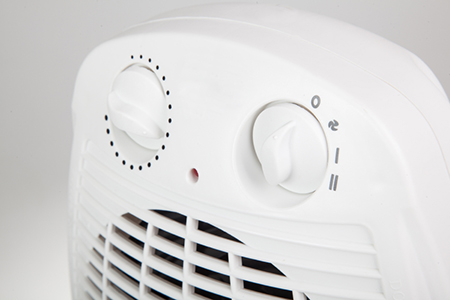 (TNS)—Central heating systems are designed to maintain a warm and comfortable temperature in your home — even when the weather outside is exceptionally cold and frigid. However, extreme snow storms and dramatically cold weather can prevent your primary heating system from effectively warming up your house and can cause cold air to infiltrate various areas of your home.
(TNS)—Central heating systems are designed to maintain a warm and comfortable temperature in your home — even when the weather outside is exceptionally cold and frigid. However, extreme snow storms and dramatically cold weather can prevent your primary heating system from effectively warming up your house and can cause cold air to infiltrate various areas of your home.
If you are experiencing frigid drafts in your home, consider adding an auxiliary heater. We explain the pros, cons and costs of each type of auxiliary heater to help you better decide which to buy.
—Electric space heater
You can warm up cold rooms in your home by using an electric space heater. An electric space heater usually contains a convection system in which a heat exchanger converts cold air to warm air, and then a fan distributes the warm air throughout the room.
Space heaters are beneficial because the devices are relatively affordable and can effectively warm up the air in large enclosed areas, such as living rooms and bedrooms.
Although the exact price of your electric space heater depends on the particular type of heater you choose, the average price of an electric space heater usually ranges from $25 to $200. However, because the heater requires electricity to generate and emit heat, the units can increase the overall costs of your household energy or electricity bills each month.
Although the specific amount that your bill increases each month depends on the power of your heater and the length of time that you use your heater, most electric heaters increase your energy bill by approximately $20 to $100 per month.
—Baseboard heater
Baseboard heaters can also successfully provide heat to warm up cold areas of your home. A baseboard heater typically uses the convection process to suck in the cold air near the floor, heat up the air, and release the warm air so it can rise up and keep the room warm.
Baseboard heaters come in a wide variety of different sizes and voltages to accommodate many different rooms and heating needs, and you can use the heaters for bathrooms, kitchens or living rooms. Because the heaters allow warm air to rise up through the room, you can install the baseboard heater under a window to prevent cold drafts from infiltrating your home.
The average cost of a baseboard heater often ranges from about $60 to $300. Because baseboard heaters are electric and usually increase your energy bills, you should ensure you purchase a unit that can adequately and efficiently heat up the particular room that is experiencing the cold draft.
—Radiant heat
You can warm up the cold rooms of your home by purchasing a radiant heater. Radiant heaters function by generating very powerful infrared rays and by emitting those rays into the room.
Most other types of auxiliary heaters operate by heating up the air inside the room. In contrast, the infrared rays emitted by radiant heaters enable the heaters to warm up the bodies and objects in the room instead of the air. This feature makes the radiant heaters especially beneficial for small rooms, such as bedrooms, bathrooms, offices and kitchens.
The average price of radiant heaters often ranges from around $50 to $250. Although the radiant heaters are electric and can increase your energy bill, the devices generates heat with a superior efficiency rate that increases your bill at a significantly lower rate than other types of electric heaters.
—Gas heaters
Gas heaters can also effectively warm up certain areas of your property. Gas heaters utilize an ignition flame system fueled by propane, kerosene or natural gas. These heaters are beneficial because the devices are very powerful, can quickly generate heat and can effectively warm up very large areas.
However, drawbacks of the devices are that the reliance on fuel makes gas heaters extremely flammable and highly prone to the emission of harmful carbon dioxide. To prevent any fires or health hazards from developing, you must ensure that your gas heater is located in an open area with sufficient ventilation, far away from any flammable materials, and at a safe distance from combustible objects, such as towels, curtains and furniture. Thus, gas heaters are especially conducive for garages, worksheds, and areas of your home that are safe and properly ventilated.
The average price of gas heaters typically ranges from approximately $200 to $800. Although gas heaters are generally more expensive than other types of auxiliary heaters, gas heaters can save you money in the long run because the devices do not require electricity, so they don’t increase your energy bills each month. Price various fuel types in your area to see which gas-powered option makes the most financial sense for you.
Brian Heuberger is a reporter at Angie’s List.
©2016 Angie’s List
Distributed by Tribune Content Agency, LLC.


